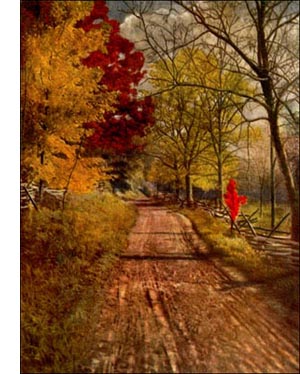Swamp White Oak Tree
 Swamp White Oak (Quercus platanoides, Sudw.)-A shaggy picturesque tree, 70 to 100 feet high, with pendulous branches, and crooked twigs forming a narrow, round head, bushy with dead twigs that hang on. Bark pale greyish brown, peeling in thin flakes from branches and trunk. Wood pale brown, coarse grained, heavy, tough, strong. Buds short, blunt, brown, hairy, clustered at tips of twigs. Leaves alternate, obovate, 5 to 7 inches long, wedge shaped at base, wavy toothed or lobed regularly, dull, dark green above, white-downy beneath. Flowers staminate, hairy, yellow catkins; pistillate few on long peduncles, hairy with red stigmas. Acorns annual, paired, on long stems; nut oval, 1 to 1 1/2 inches long, brown, hairy at tip, in rough cup with thickened scales, sometimes fringed at border; kernel sweet, edible. Preferred habitat, moist or swampy soil. Distribution, southern Maine to southern Iowa; south to Maryland, Kentucky and Arkansas; along mountains into Georgia. Commonest about the Great Lakes. Uses: Picturesque tree in landscape, but rarely planted. Lumber not distinguished commercially from other white oak. Used in construction of houses, boats, agricultural implements and vehicles; also, for fencing, railroad ties and fuel.
Swamp White Oak (Quercus platanoides, Sudw.)-A shaggy picturesque tree, 70 to 100 feet high, with pendulous branches, and crooked twigs forming a narrow, round head, bushy with dead twigs that hang on. Bark pale greyish brown, peeling in thin flakes from branches and trunk. Wood pale brown, coarse grained, heavy, tough, strong. Buds short, blunt, brown, hairy, clustered at tips of twigs. Leaves alternate, obovate, 5 to 7 inches long, wedge shaped at base, wavy toothed or lobed regularly, dull, dark green above, white-downy beneath. Flowers staminate, hairy, yellow catkins; pistillate few on long peduncles, hairy with red stigmas. Acorns annual, paired, on long stems; nut oval, 1 to 1 1/2 inches long, brown, hairy at tip, in rough cup with thickened scales, sometimes fringed at border; kernel sweet, edible. Preferred habitat, moist or swampy soil. Distribution, southern Maine to southern Iowa; south to Maryland, Kentucky and Arkansas; along mountains into Georgia. Commonest about the Great Lakes. Uses: Picturesque tree in landscape, but rarely planted. Lumber not distinguished commercially from other white oak. Used in construction of houses, boats, agricultural implements and vehicles; also, for fencing, railroad ties and fuel.The swamp white oak loves the waterside, and many a noble specimen has been swept away by spring floods or by the gradual undermining of the bank on which it grew. Such was the fate of the famous Wadsworth oak, a landmark in the Genesee Valley in New York State, even when the Indians were the only people there to admire it. A young tree of this species is generally pyramidal and quite symmetrical in form, its stout branches short and horizontal, the lower ones tending to droop. The strength of character, however, the ruggedness that make so strong appeal to us in this tree, comes when it has put by the comeliness of youth and the stern battle of life has left its scars on the veteran.
Look at a swamp white oak against a winter sky. I mean that old one which has stood there with its feet in the water as long as you can remember. In fact, it seemed to be grown up when first you were told its name. The head is narrow for an oak, the limbs short and tortuous, especially on the lower half of the tree where they have a downward tendency, seeming to sprawl as widely as their grizzled and stubby length permits. Storms have cut gashes in the outline of the top. A weird grey pallor heightens the expression of age. The bark strips off of the branches somewhat after the sycamore's mode of moulting. Nothing contributes more to the picturesqueness of a tree than ragged bark.
In spring the rough coat of the tree is concealed by the opening leaves. The black oaks flush crimson when they wake in the May sunshine. The young leaves of the swamp white oak are green, with a silvery scurf that lines them the summer through. Even in its autumn colour the foliage turns yellow and never red. All through the summer the brilliant foliage, lustrous yellowgreen above, turns its silvery linings out in every breeze, and fairly illuminates the duller trees that stand about. One authority calls it Quercus bicolor, for the two colours of its leaves.
This is one of the chestnut oak group. The leaf proves it by its shape and margin. The long, sweet nut in its fringed or plain cup is worthy the attention of any hungry man or beast.
The swamp white oak is easily transplanted and it grows rapidly, but because it is known to be a hard drinker people do not plant it, forgetting that trees sometimes are happy out of their normal habitat. This oak flourishes as a street tree, and does well in any moist, rich soil, graciously waiving, for our satisfaction, its natural preferences.
But he who would have this tree in its grandest state will wish it set at some distance from his house, and where it is made very comfortable. While we transplant small saplings into our grounds, let us exert ourselves to cherish the old ones and help the community to realise what a precious thing one of these veteran trees is-the natural heritage of all who can see it.